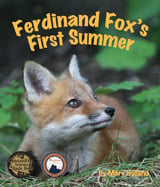Caspian Terns Feeding

Watching a Caspian Tern (our largest tern) feeding in deep water is a lesson in persistence and grace. Flying back and forth it circles the water below, its bill pointed down as it searches for fish. A Caspian Tern’s dive is impressive. Once a tern sees a fish it hovers briefly, flexes its wings and then plunges straight down like a bullet. When it hits the water, it typically completely submerges itself.
Most fish captured are consumed on the wing, unless they are delivered to offspring. Fish bones and scales are difficult for terns to digest; they solve this situation by casting one or two pellets a day that consist of these indigestible parts.
Naturally Curious is supported by donations. If you choose to contribute, you may go to http://www.naturallycuriouswithmaryholland.wordpress.com and click on the yellow “donate” button.
Mystery Photo: Bald Eagle or Osprey Pellet
 Congratulations to Jill Osgood (“osgoodjill”), the first reader to correctly identify the pellet of either a Bald Eagle or an Osprey. Many people are familiar with bird pellets – lumps of material consisting of the indigestible parts of a bird’s diet which are regurgitated by the bird hours after they’ve eaten their prey. Raptors often consume their prey whole, including parts that are not easily digestible such as fur, feathers, bones, teeth, nails, etc. These parts get as far as the proventriculus, an organ located between the esophagus and the gizzard, where they are packed into a pellet.
Congratulations to Jill Osgood (“osgoodjill”), the first reader to correctly identify the pellet of either a Bald Eagle or an Osprey. Many people are familiar with bird pellets – lumps of material consisting of the indigestible parts of a bird’s diet which are regurgitated by the bird hours after they’ve eaten their prey. Raptors often consume their prey whole, including parts that are not easily digestible such as fur, feathers, bones, teeth, nails, etc. These parts get as far as the proventriculus, an organ located between the esophagus and the gizzard, where they are packed into a pellet.
We often associate pellets with owls, but many species of birds, in addition to owls and other birds of prey, form pellets. They include grebes, herons, cormorants, gulls, terns, kingfishers, crows, jays, dippers, shrikes, swallows, and most shorebirds. The size of the Mystery Photo pellet (3” long) indicates that the bird that regurgitated it was very large – in general, the larger the bird, the larger the pellet. It was found near the shore of Lake Champlain, where Ospreys and Bald Eagles are not uncommon.
If I had to, I would guess the pellet was regurgitated by a Bald Eagle. Osprey are piscivores, eating primarily fish, and bald eagles are carnivores, eating a variety of fish, mammals and amphibians. A close look at the pellet reveals, in addition to fur and fish scales, the upper mandible of a very small rodent on the left hand end of the pellet. An Osprey’s pellets consist of primarily scales and bones, whereas a Bald Eagle’s pellets are composed primarily of hair (its stomach acid breaks down the bones and scales).
Twelve to eighteen hours after consuming prey, a Bald Eagle casts a pellet. Relatively odorless and light-weight, these pelleted remains can reveal the varied diet of this raptor.
Naturally Curious is supported by donations. If you choose to contribute, you may go to http://www.naturallycuriouswithmaryholland.wordpress.com and click on the yellow “donate” button.
Great Blue Heron Casting Pellet
 Great Blue Herons swallow their prey whole, which means they consume not only flesh, but also bones and fur (if they eat a mouse or a vole). They are able to digest almost all of the prey that they eat due to acidic stomach secretions that are capable of softening even bones. However, they are not able to digest hair, or fur. This indigestible matter is formed into pellets which Great Blue Herons regurgitate – much like owls and many other birds.
Great Blue Herons swallow their prey whole, which means they consume not only flesh, but also bones and fur (if they eat a mouse or a vole). They are able to digest almost all of the prey that they eat due to acidic stomach secretions that are capable of softening even bones. However, they are not able to digest hair, or fur. This indigestible matter is formed into pellets which Great Blue Herons regurgitate – much like owls and many other birds.
Naturally Curious is supported by donations. If you choose to contribute, you may go to http://www.naturallycuriouswithmaryholland.wordpress.com and click on the yellow “donate” button.



















What Other Naturally Curious People Are Saying